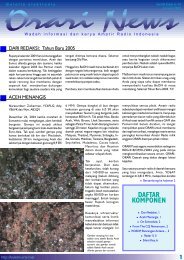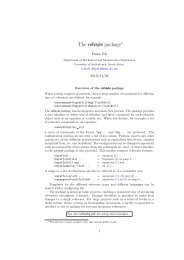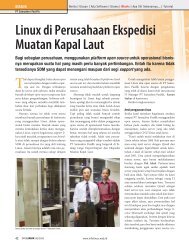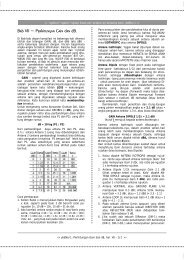Create successful ePaper yourself
Turn your PDF publications into a flip-book with our unique Google optimized e-Paper software.
3.7 SCREEN AND SUPPRESSOR GRID BY-PASSING<br />
AND SCREEN TUNING<br />
Low inductance leads are generally advisable for screen and<br />
suppressor grid terminal connections. For all frequencies, it<br />
is a good practice to route the screen and suppressor bypass<br />
capacitors directly from one filament terminal. The suppressor grid<br />
is bypassed in the same manner when the suppressor is operated<br />
at other than cathode potential. With the suppressor operating<br />
at cathode potential, the suppressor should be grounded to the<br />
chassis directly. In the VHF region, the connection to the screen<br />
terminals (for those tubes with two screen pins) should be made<br />
to the mid-point of a strap placed between the two terminals on<br />
the socket. This provides for equal division of the rf current in the<br />
screen leads and minimizes heating effects.<br />
Above the self-neutralization frequency (see “Neutralization”<br />
Section 5) of the tetrode or pentode, the screen bypass capacitors<br />
are sometimes variable. By proper adjustment of this capacitance<br />
the amount and phase of the screen rf voltage can be made to<br />
cancel the effects of the feedback capacitance within the tube.<br />
Thus, neutralization is accomplished. It is worth noting that the<br />
screen lead inductance and the variable capacitor are not series<br />
resonant, the variable capacitor is adjusted so that a net inductive<br />
reactance remains to provide the proper voltage and phase for<br />
neutralization.<br />
The preceding paragraphs apply directly to tubes having the screen<br />
and suppressor grids mounted on supporting rods, notably tubes<br />
with glass envelopes. Ceramic tubes having concentric isolated<br />
cone terminals use a series of collets to connect to the tube. The<br />
screen collet may be bypassed with ceramic “doorknob” capacitors<br />
at HF. At VHF frequencies, the preferred bypass capacitor is made<br />
from a film-type dielectric mounted directly against the chassis<br />
deck, with the collet connected directly to a plate, which rests<br />
against the adjacent side of the dielectric. Dielectric materials<br />
can be Teflon, Mica, or Mylar. A modern material named Kapton is<br />
also desirable, because opposing surfaces can be metallized for<br />
increasing the effective capacitance per unit area. The Eimac SK-<br />
840 is an example of a socket for the 5CX1500B pentode having<br />
the screen bypass capacitor built into mounting plate. This allows<br />
circuit stability up to several hundred MHz.<br />
Many FM broadcast transmitters use a simple, effective scheme<br />
in which the length of several straps between the screen collet<br />
and chassis ground plane are adjusted according to operating<br />
frequency, establishing the proper neutralization. The theory of this<br />
is discussed in sec. 5.5.4<br />
58
















